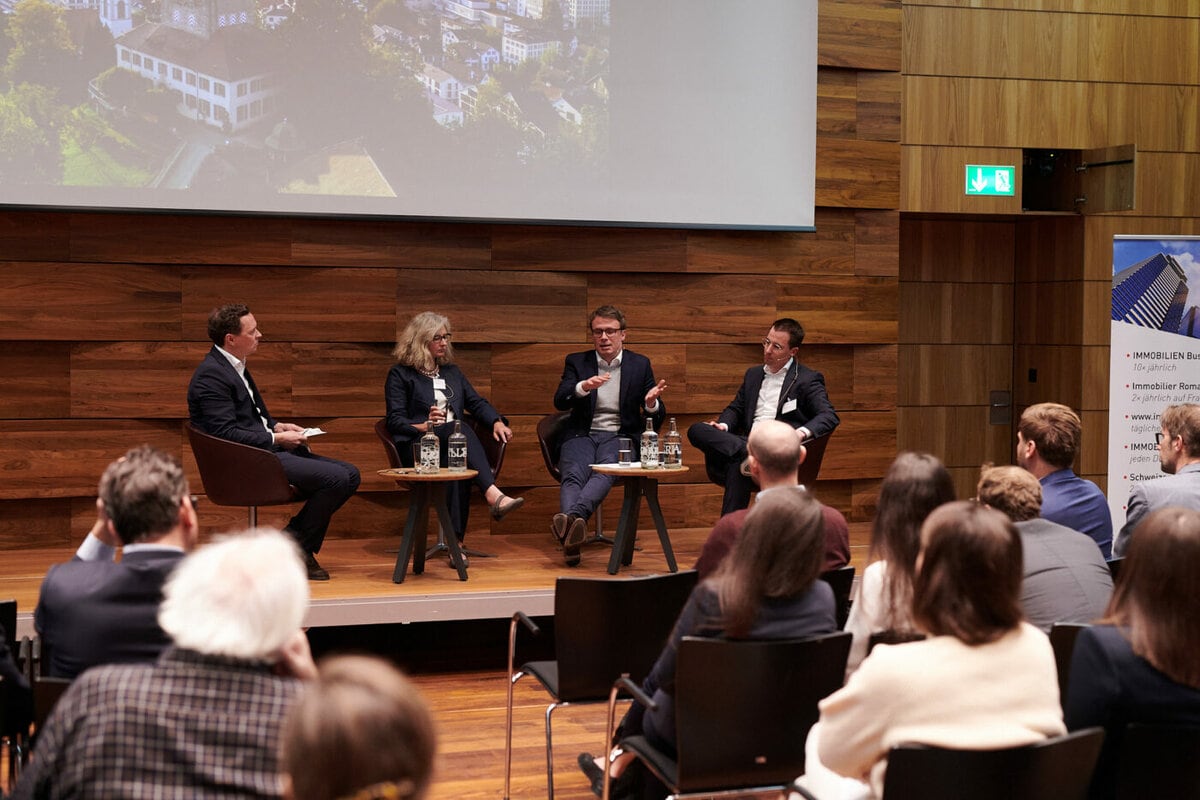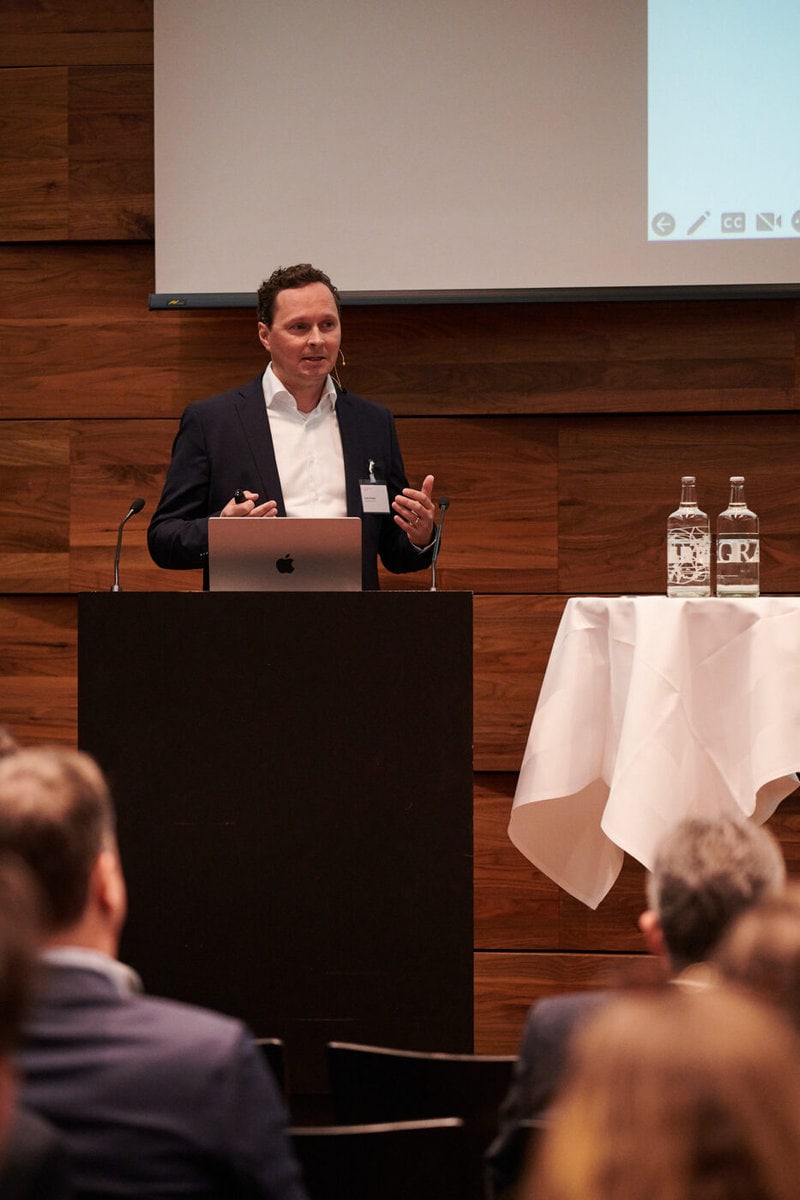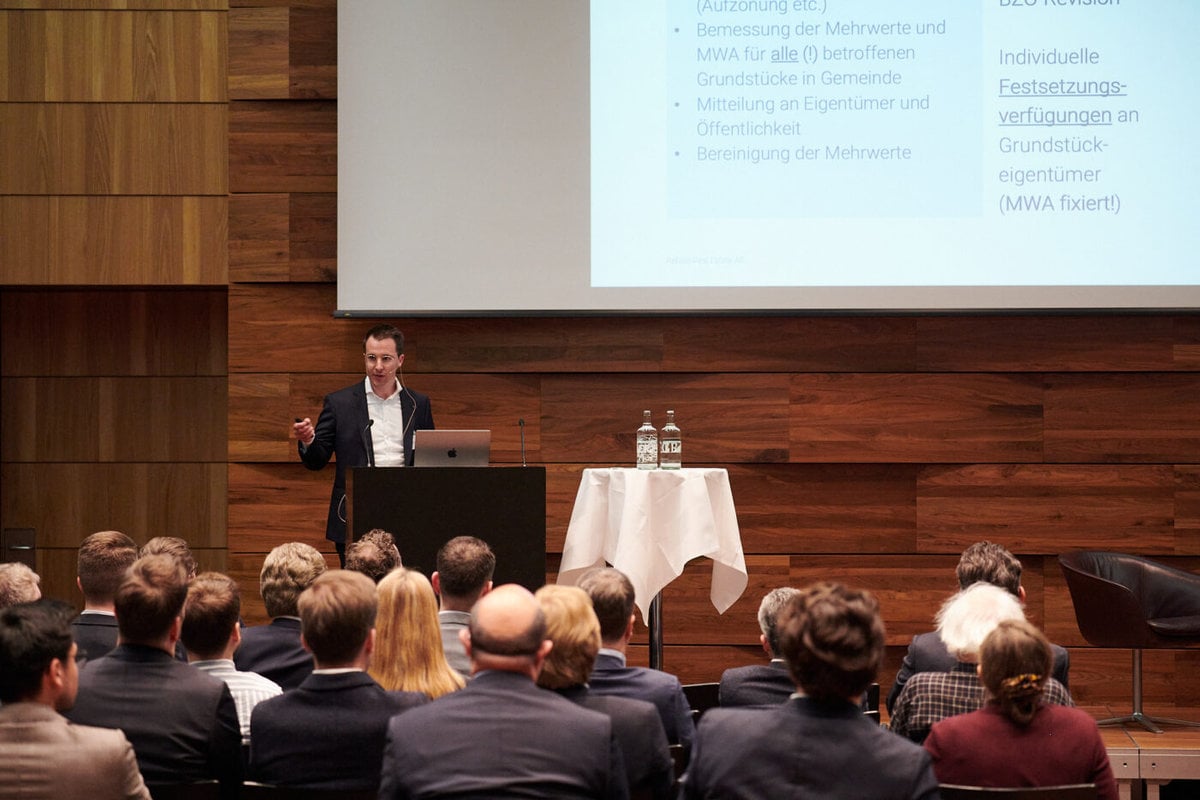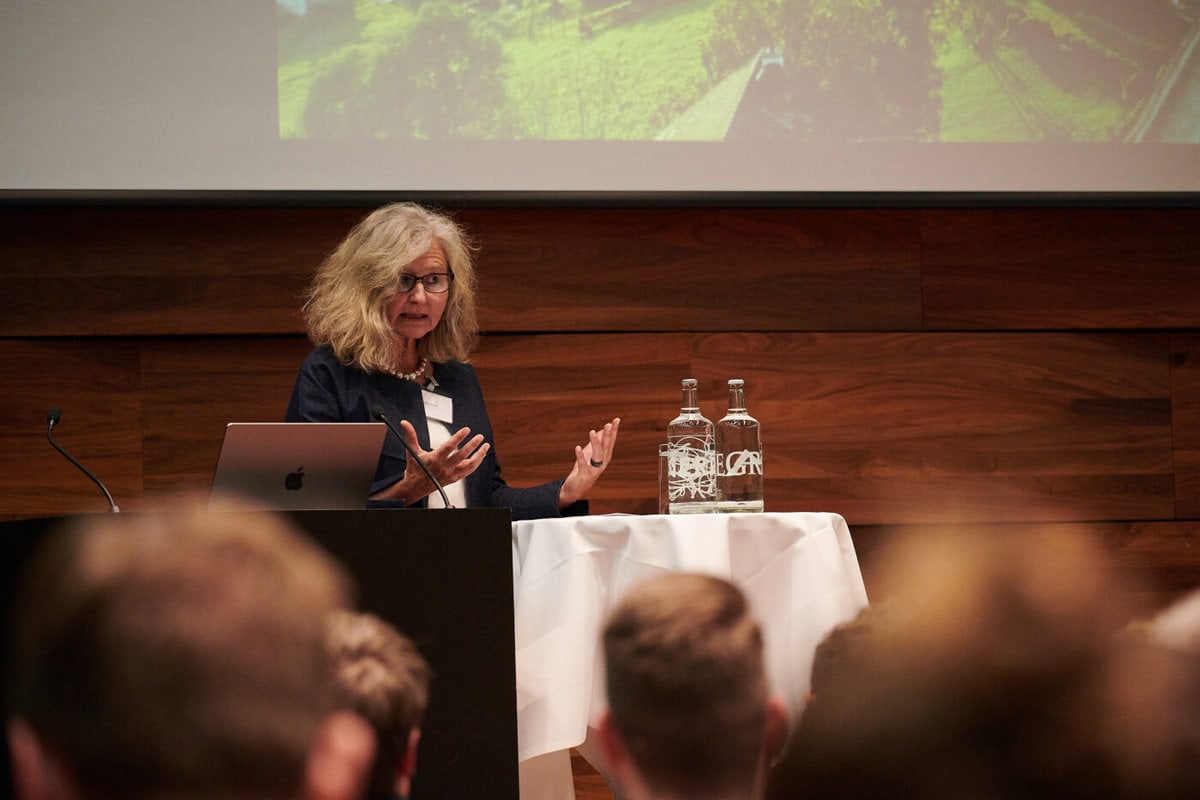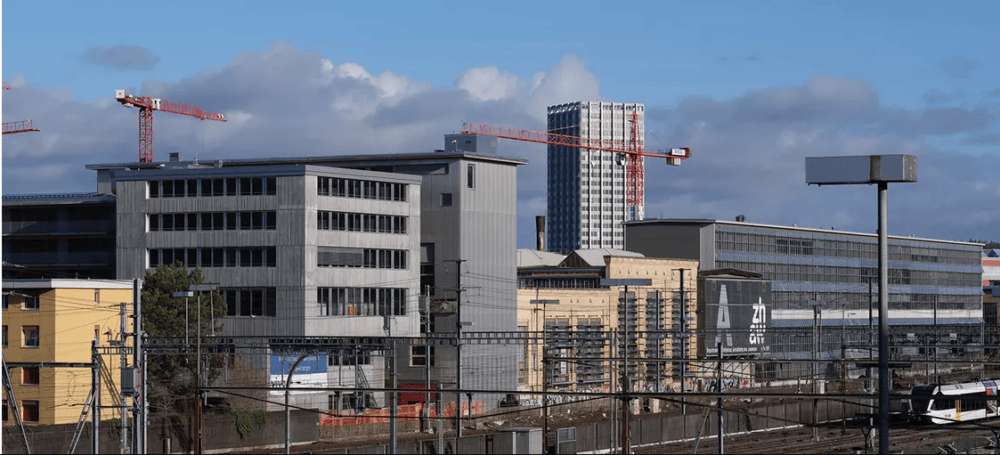Review 90th Swiss Real Estate Talk
Housing is in short supply in Switzerland. Against this backdrop, the latest Real Estate Talk revolved around the question of whether regulatory requirements are slowing down the construction of new apartments and thus causing a housing shortage.
How much regulation does the market need?
There is still room in Switzerland. But the population is growing by around one percent per year. According to the Federal Statistical Office, the permanent resident population of Switzerland currently numbers around 8.8 million. Around 1.5 million people live in the canton of Zurich. The term densification has therefore long been on everyone's lips.
But where many people live in a confined space, sensitivities are also aroused. In order to be able to take advantage of the population and economic growth, and at the same time to further develop the high quality of life and location in the canton of Zurich, regulations are being introduced. Protection of the local image, noise and tenants are to ensure a moderate coexistence, as are a ban on zoning, value-added levies and rezonings.
But is cumulative regulation causing a housing shortage? And where could or should we relax and where should we improve? Three experts discussed these questions at the 90th Real Estate Talk in Zurich and presented their experiences and approaches to solutions. Christian Kraft from the Lucerne University of Applied Sciences and Arts led the evening at the Metropol in Zurich, which was attended by around 100 people.
Permits at a low level
"Population growth is enormous at the moment," he introduced the audience to the topic, illustrating this with figures from the Canton of Zurich's long-term spatial development strategy from 2014: according to this, the canton expected 280,000 additional people by 2040, 80 percent of whom would live in urban areas. 140,000 people have already immigrated. "This means that 50 percent of the forecast has already come true," Kraft said.
Of course, the additional people need space to live. However, according to Kraft, the average time it takes to obtain permits for new construction is also growing steadily. "The number of rental apartments approved for construction is currently at its lowest level in the past decade," Kraft continued. Without the 250,000 rental apartments that institutional owners and real estate companies have built for more than 500,000 people in Switzerland over the past 20 years, there would have been a housing shortage long ago.
Where is the market heading
With questions about what has changed and where the market is headed, Kraft turned to the first speaker, Robert Weinert, Partner and Head of Immo-Monitoring at Wüest Partner AG, whose specialties include market analysis, planning and valuation.
Robert Weinert spoke of a housing shortage. The term housing shortage does not apply at present due to the quality of the apartments. He attributes the housing shortage to the decreased and currently stagnant number of building applications. "Due to the increase in interest rates and financing, many builders have postponed or canceled their building projects," Weinert said. But the number of building permits is also down sharply. These have hardly been issued due to many appeals and for legal reasons, he said. While the supply of apartments is declining as a result, demand continues to rise in return. This trend is being reinforced, he said, as more and more older people are living in their apartments for longer, and younger people are also living more frequently in one- or two-person households.
Even though more apartments are being offered seasonally again, the supply of rental apartments is continuously declining, according to Weinert. For tenants, this means that supply rents will rise sharply if there is a shortage of housing. In 2023, already by about three percent. "Existing rents will also rise," Weinert predicts.
Weinert provided reasons for the housing shortage using the example of Graubünden, where it is particularly difficult to find an apartment. This, he said, is related to the second-home tax, which has an impact on rental housing construction. "Fewer rental apartments are being built in the municipalities," Weinert said. However, many people are renting apartments as second homes in tourist areas, he said, because there are hardly any condominiums left. "This, in turn, takes housing away from local renters," Weinert explained.
Housing cost burden increases
The Zurich area and the cities of Geneva and Lausanne are also facing a severe shortage of housing. This in turn has an impact on rents and thus on the housing cost burden, which is becoming increasingly high and currently stands at 28 percent of income.
The situation is different for residential property than for rental apartments. "The situation seems to be easing here," says Weinert. This is due to the fact that there are more properties on the market and it takes longer to find an interested party.
Finally, moderator Christian Kraft summarized, "So, with demand growth outpacing population growth while planning levels are low, the pressure on cities is growing. But how do we create the space in cities?" Kraft posed this question to the next speaker, Nicola Haas, a member of the executive board of Refolio Real Estate, a consulting firm focused on architecture, project development and portfolio management.
In his presentation, Nicola Haas focused on value-added compensation on planning added values and questioned the so-called "construction tax" for densification. But what exactly is added value compensation anyway? "It is a state levy on the added value of a property that arises from a planning measure, such as a BZO revision with zoning, upzoning or rezoning.
The municipalities can set the levy rate on the added value at between 20 and 40 percent. The compensation for added value is then levied in a two-stage procedure. Once the BZO revision has come into force, the first step is to issue an individual assessment notice to the property owners. This fixes the value-added compensation. "If the building permit is issued and the property is built over, the reference order becomes due in a second step within 30 days," says Haas. The only exceptions are minor construction measures, such as renovations or additions to an existing building of less than 100 square meters of chargeable floor area. Years can pass between the two phases.
Effect on compaction
Next, Haas addressed the question of how value-added compensation affects densification. He emphasized, "There are only tendencies where the journey is going. So I can't proclaim any absolute truths." What effect the law will have, he said, will only be seen in the next few years.
However, Haas is of the opinion that value-added compensation rather than densification tends to have the opposite effect. For example, he says, there generally has to be a high level of liquidity available for a construction project to be viable. "Value-added compensation does not make it easier to finance," he says. On the contrary, "Value-added compensation taxes unrealized capital gains, and how can you pay for a capital gain that doesn't provide liquidity," Haas explains. For certain owners, this even makes it more difficult to realize a project or even rules it out.
According to Haas, value-added compensation tends to work against internal densification, since in certain cases it makes it more difficult to finance construction projects with land expansion, whereas value-added compensation does not affect construction projects without land expansion. In addition, the added value compensation would worsen the economic attractiveness of the consumption of utilization reserves compared to alternative investments.
From the perspective of a city
Finally, Barbara Thalmann, Mayor of Uster, looked at the topic from a different perspective. Every day, she has to find solutions with the property owners, construction companies and the population from the city's point of view. "Currently, Uster has 36,000 inhabitants. However, the city has to gear up for a growth of 20 to 25 percent," she said. That is a challenge, she said, but the city has set out to prepare for and achieve that goal.
"To this end, we have initiated an urban development concept and asked the question of how the city should develop under the perimeter of densification," said the city president. Not only construction-related issues are relevant, but also mobility and how to preserve the quality, green spaces and history of the city, she said.
People should be able to live and work in Uster in the future as well. This requires regulations and laws, which the city can define by means of the building and zoning regulations (BZO) and design plans.
The value-added compensation was also discussed in Uster and was finally set at 30 percent, he said. "First of all, we had a design plan from a private developer for an industrial site, which was made according to the Value-Added Tax Act and played through," Thalmann said. It was agreed with the developer that he would not have to pay. Instead, it commits itself to creating jobs or non-profit housing.
Thalmann considers it more sensible to compensate for the added value with added value for the site itself instead of money. For example, green space design. How to deal with the issue, however, needs some practice and must be decided by each municipality for itself.
Stay in dialog
"Every construction project is subject to a larger process," Thalmann said. But he also said that building offices are short of specialists to work through the building permits. "In the past, building permits were thin notebooks, but today they are thick books, because you have to take a lot into account and consider a lot," the city president explained. If the canton also comes into play, it often takes even longer.
Regulation is an irritant, he says, because different interests clash. But it is an attempt to improve a poor condition. This includes noise reduction as well as the protection of townscape and historical monuments. Because it is important that a place gives identity, says Thalmann, and adds in conclusion: "It is important to remain in discussion, because there are always solutions. However, both sides must be willing to find one."
The 91. Real Estate Talk will be held in Lausanne on April 27, 2023.







